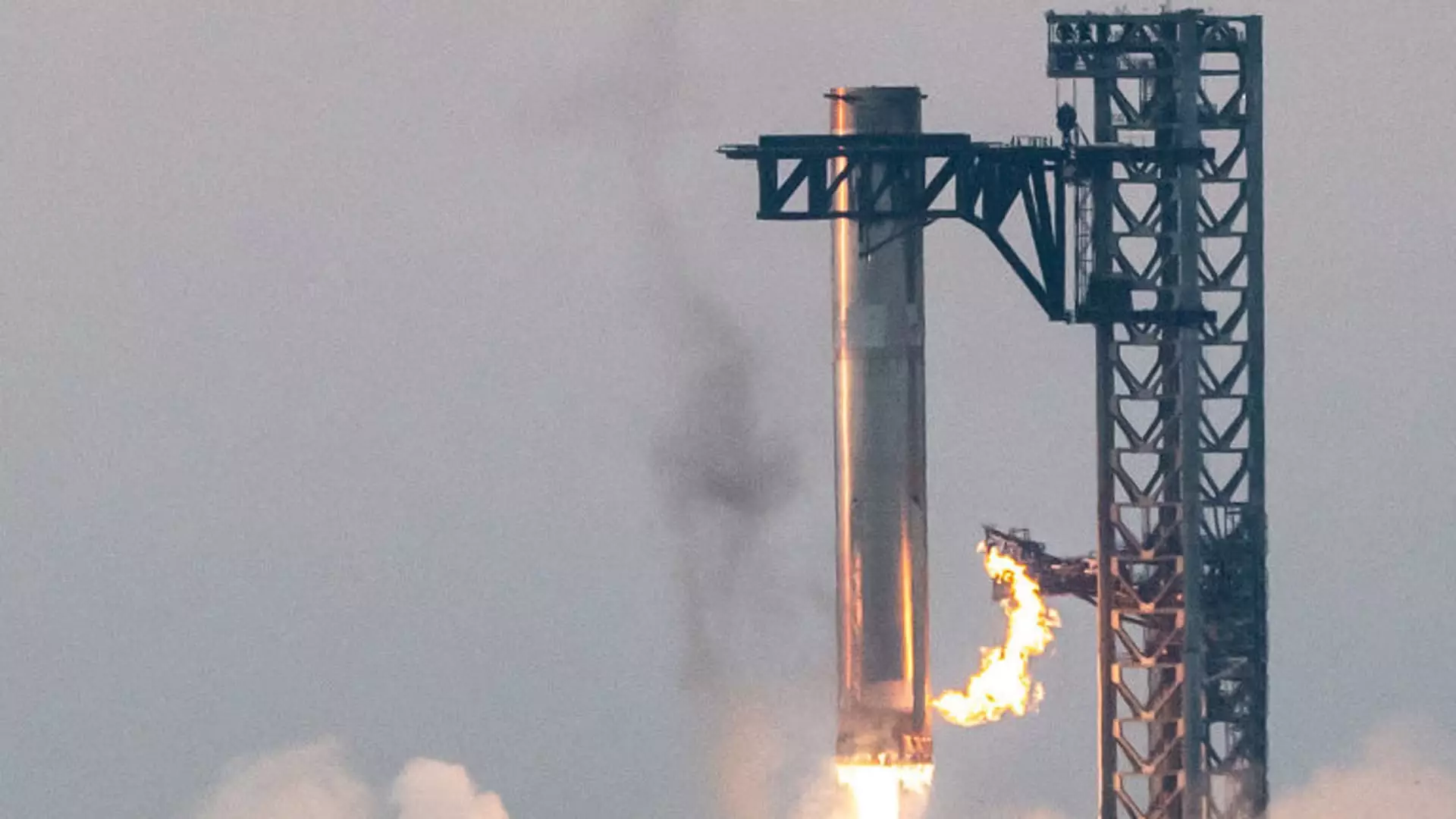Space exploration has always fascinated humanity, and companies like SpaceX are at the forefront of this venture, pushing the boundaries of our technological capabilities. On a sunny Sunday morning, SpaceX achieved a remarkable feat: the successful test flight of its Starship rocket, culminating in an impressive recovery of its Super Heavy booster. This monumental event not only signifies progress in the realm of reusable rocket technology but also solidifies SpaceX’s role in the future of space exploration, including NASA’s ambitious Artemis program.
A Stellar Achievement: The Test Flight Overview
Launched at 8:25 a.m. ET from the company’s Starbase facility in Brownsville, Texas, SpaceX’s fifth Starship test flight was marked by its successful booster recovery, a critical step toward fully reusing rocket components. The Super Heavy booster, a gargantuan structure standing at 232 feet, returned to rest on the arms of the launch tower approximately seven minutes post-launch. SpaceX communications manager Dan Huot expressed his excitement, capturing the awe felt by spectators and enthusiasts alike: “That looked like magic.”
As the Starship ascended, it conducted its intended mission, which involved a journey halfway around Earth before safely splashing down in the Indian Ocean. The absence of crew members aboard this flight exemplifies SpaceX’s commitment to rigorous testing before attempting crewed missions, with company leadership predicting extensive future flights.
SpaceX has consistently emphasized an iterative approach to progress, with each test flight reinforcing insights gleaned from previous endeavors. This pattern of learning has evidently paid off, as the recent test surpassed the milestones set during the fourth iteration. The path to success is paved with failures and lessons learned, which SpaceX rigorously incorporates into their development process. Their ambition culminated in the innovative “chopstick” mechanism used to catch the booster, highlighting the company’s commitment to refining its methods.
The weight of expectation rests heavily on the shoulders of SpaceX given its pivotal contract with NASA to serve as a lunar lander for the Artemis program. This partnership underscores the importance of reliable test outcomes and operational integrity as the agency aims for a sustained human presence on the Moon and beyond. NASA Administrator Bill Nelson’s congratulatory remarks post-flight signal an optimistic outlook for the collaborative efforts between the two organizations.
Despite the technological triumphs, SpaceX has also faced its share of regulatory challenges. In a prior critique of the Federal Aviation Administration (FAA), both SpaceX and CEO Elon Musk articulated frustrations regarding delays attributed to environmental assessments related to launch activities. However, it appears that the FAA expedited the process to grant a launch license sooner than anticipated. The interplay between rapid technological innovation and regulatory oversight remains a delicate balance as SpaceX pushes forward.
Furthermore, the company has managed the complexities of environmental compliance at its Texas launch site, facing fines for unauthorized water discharges. This situation underscores the industry-wide call for sustainable practices as space exploration activities increase. SpaceX’s ability to navigate these challenges will be pivotal in supporting its ambitious goals while adhering to environmental stewardship.
Starship epitomizes a new era in space travel, characterized by its towering height and immense power. At 397 feet, it stands as the tallest and most powerful rocket ever constructed. Equipped with 33 Raptor engines, the Super Heavy booster generates a staggering 16.7 million pounds of thrust, eclipsing the capabilities of its competitors. This new technology is designed to facilitate a vast array of missions, aiming to transport cargo and crew beyond Earth’s atmosphere, including strategic missions to the Moon and eventually Mars.
The full Starship system, when stacked, offers a blend of engineering marvels and innovative propulsion, powered by liquid oxygen and liquid methane. The potential for reusability introduces a game-changing dimension to the economics of space travel, allowing for more frequent and cost-effective missions. This technological leap encapsulates the broader vision for future space exploration — shifting from ephemeral, single-use trips to a robust framework of sustainable operations.
The success of SpaceX’s fifth Starship test flight exemplifies the relentless pursuit of innovation within the aerospace sector. Each accomplishment serves to bolster the confidence in its capabilities, fuel ambition for further exploration, and highlight the company’s commitment to reusability. As the space race continues to evolve, SpaceX stands poised to lead the charge into uncharted territories, symbolizing the indomitable human spirit keen to explore beyond our terrestrial confines. The unfolding story of Starship is not just a technical narrative, but a testament to what can be achieved when boundaries are pushed, skeptics silenced, and dreams aspire to reach the stars.


Leave a Reply